#crise diesel
Explore tagged Tumblr posts
Text
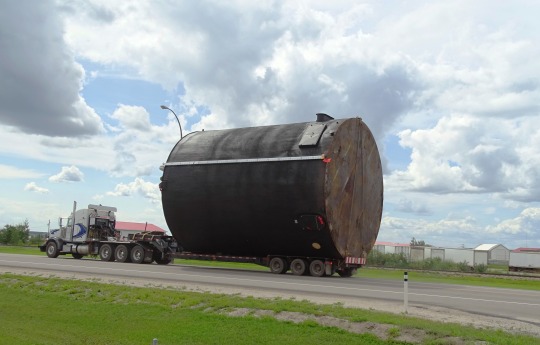















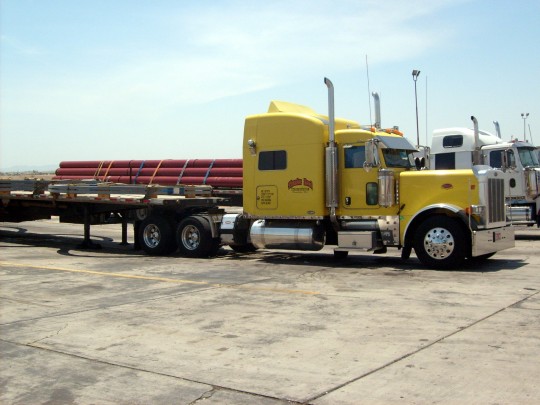



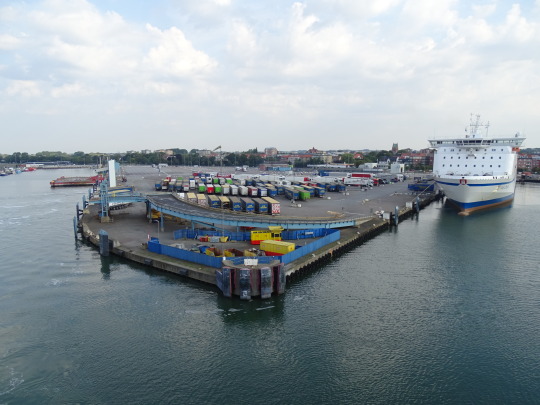






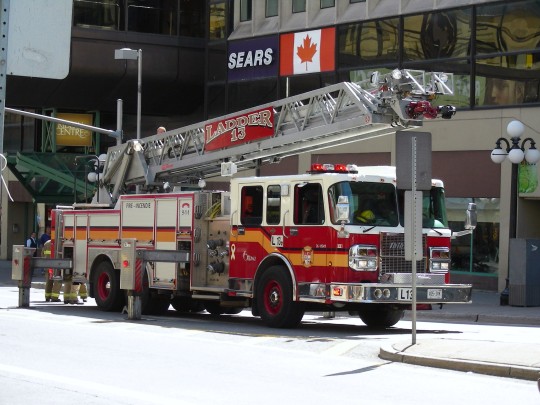

Truck Driver Day
Professional truck drivers are honored and celebrated today with Truck Driver Day. In the United States, a driver is considered to be a truck driver when their vehicle has a gross vehicle weight—the weight of the vehicle loaded—of at least 26,000 pounds. They must obtain a commercial driver's license (CDL) to drive a vehicle of this weight. Employers often require their drivers to take a safety training program, and some also require a high school degree or GED.
Truck drivers carry all kinds of freight—livestock, food, canned goods, liquids, packages, and vehicles—all across the United States and the world. They often have to load and unload their freight and must inspect their trucks before taking to the road. Truck drivers often ship products to stores, and some may have to undertake sales duties. Many truck drivers work long hours. Some may have daily local routes that keep them close to home, while others may have routes and schedules that often change, and many have to be away from home for an extended amount of time.
Some trucks were on the road in the United States prior to World War I. Trucks continued to be used and developed during the war, and by 1920 there were more than a million trucks on the roads of America. Trucking continued to expand over the following decade, on account of advancements such as the introduction of the diesel engine, improved rural roads, the introduction of power brakes and steering, and the standardization of truck and trailer sizes. In the 1930s, a number of trucking regulations were implemented, and the American Trucking Association was created. Trucking activity increased in the 1950s and '60s, in large part because of the creation of the Interstate Highway System. Regulations on the weight of trucks continued to be updated.
The heyday of the truck driver came in the 1960s and '70s. At the time, a wide swath of the public viewed truck drivers as modern-day cowboys or outlaws. The rise of "trucker culture" was signaled with the proliferation of trucker songs and films, the wearing of plaid shirts and trucker hats by the public, and the wide use of CB radios and CB slang. The romanticization of trucker culture subsided by the dawn of the 1980s.
Many truckers went on strike during the energy crises of 1973 and 1979, after the cost of fuel rose. The Motor Carrier Act of 1980 partially deregulated the industry. As a result, many new trucking companies were started. Trucker union membership also drastically declined, leading to lower pay. But the deregulation did reduce consumer costs, and it increased production and competition in the trucking industry. By the twenty-first century, trucking dominated the freight industry. In 2006, there were 26 million trucks on America's roads, which hauled about 70 percent of the country's freight. Truckers continue to play a prominent role in keeping the wheels of the economy turning, and for the hard work they put in to make this happen, they are honored and celebrated today!
How to Observe Truck Driver Day
Some ideas of ways the day could be spent include:
If you are a truck driver, get out there and drive! Or, take the day off. It should be up to you!
Wave to truckers or make a gesture like you are pulling a truck horn in an attempt to get them to honk their horns.
Thank a truck driver. Tell them thanks in person or make a social media post of thanks. Include the hashtag #TruckDriverDay.
Become a truck driver.
Listen to some truck driving songs such as "Convoy" and "Truck Drivin' Man."
Watch some truck driving films such as Smokey and the Bandit, Convoy, and Big Rig.
Talk on a CB radio.
Eat at a truck stop.
Attend or take part in the National Truck Driving Championships, which are held around the time as Truck Driver Day.
Read a book about trucking or truckers such as Trucking Country: The road to America's Wal-Mart Economy or The Long Haul: A Trucker's Tales of Life on the Road.
Explore the websites of organizations and companies related to the industry such as American Trucker, Truckers News, the Federal Motor Carrier Safety Administration, the American Trucking Associations, and the Women in Trucking Association.
#Hafen Rostock#MS Tom Swayer#Trelleborg Harbor#Alaska Highway#Yukon#British Columbia#Canada#Sweden#Germany#summer 2023#Truck Driver Day#TruckDriverDay#12 August#car#truck#streetscene#USA#original photography#I really love the first pic#Nevada#Manhattan#New York City#Sherman Summit#fire truck#Chicago#San Francisco#Echo Canyon#Utah#Wyoming#California
8 notes
·
View notes
Text
"Stick an aircraft engine in it" part 1 - Boeing Jetfoil
In the late 60s and early 70s, all branches of transport were hoping for an increase in performance similar to what the jet airliner brought to aviation, and the solution was invariably to use similar gas turbine technology, with invariably identical career trajectories when the oil crises hit, as, apart from in aviation, far more economical engine options were available. So I was very surprised to see this still active in Japan last summer:

This is a hydrofoil which uses gas turbines to power a pump-jet. Once it is going fast enough, it takes off and runs on foils, greatly reducing water resistance and achieving speeds up to 45 knots, over 80 km/h (which, on water, is very fast). I remember seeing exactly this type of vessel in ferry brochures when I was a child; Oostende Lines operated some between England and Belgium. The advent of the SeaCat, a class of huge Diesel-powered car-carrying catamarans, got the better of the hydrofoils and the hovercraft, which was incidentally another case of "stick an aircraft engine in it".

This specific class of hydrofoil takes the mantra to another level, as it was designed by Boeing, which named it the 929 Jetfoil. Production was licensed to Kawasaki Heavy Industries in Japan, which made boats for the domestic market. The Rainbow Jet is one of these, running between Sakaiminato on the San'in coast and the Oki Islands. I saw more of them at Atami in Eastern Shizuoka, providing transport to the Izu Islands. So, despite the astronomical 2150 L/h consumption (though to be fair, I can't find consumption numbers for equivalent foot passenger-only catamarans), Japan still runs them...

#Japan#Shimane-ken#Mihonoseki#島根県#美保関#隠岐フェリー#レインボージェット#Rainbow Jet#Jetfoil#gas turbine#the Seventies' Solution for Speed#2023-07
3 notes
·
View notes
Text
Qui est responsable ?
Le logiciel des princes qui croient qu'ils nous gouvernent alors qu'ils nous mènent à l'abattoir tient en trois mots : ''la transition verte'', un échec sanglant... leur satanée ''mondialisation'' (malgré son échec XXL)... et leur ''Europe'' qui n'est qu'une machine liberticide... Pour eux seuls, ces trois incongruités sont les seules clés du futur. Et si pas une seule n'a jamais marché... ce serait, à les écouter, ''parce qu'il faut plus des trois !'' (sic !), ce qui est une ''dystopie'''. Tout le monde le sait (jamais la confiance en la parole officielle n'a été aussi basse), mais personne ne dit rien.
Cette énorme erreur d'aiguillage, on la connaît et on la subit depuis longtemps. En revanche, ce qui a surpris, c'est la vitesse de cette victoire du faux sur le vrai, obtenue à peu de frais (pour eux). Mais ils dominent tout avec une efficacité d'autant plus redoutable que le ''système'' est vraiment au point : il détruit tout, contrôle tout, ronge tout, avale tout, confisque tout... et ne produit rien en retour (au mieux, il redistribue... et encore... très mal !). La ''crise agricole'' vient de trouver une non-solution factice –puisque limitée à ''un report temporaire'' : nos doctrinaires n'ont rien lâché !
En résumé : une “caste” sans mérites particuliers autre que son ambition croit avoir reçu en partage le pays et ses richesses (devenues des prébendes, des rentes à vie, et des copinages florissants. Cf le gouvernement annoncé ce jeudi soir), et a délégué à une Administration pléthorique, qui est surpayée au sommet et dont la base croule sous des avantages syndicaux et statutaires, mais immérités et indus, qui se fout comme d'une guigne des habitants, tour à tour “usagers”, assujettis ou contribuables, des “ceux qui ne savent pas et n'ont pas besoin de savoir’’, inférieurs aux ’‘ceux qui savent et décident”. Et, pour paraphraser Voltaire, “que croyez-vous qu'il arrivât ? C'est le contribuable qui creva !”.
On l’a un peu oublié, mais tant le mouvement des gilets jaunes que la révolte paysanne actuelle (son dernier rejeton à ce jour), sont nés de la jacquerie fiscale de la France dite périurbaine –en vérité stigmatisée--, cette France de la clope et du diesel (comme avait osé le dire le macronien pur jus Griveaux). Ces maltraités se sont révoltes une première fois en novembre 2018 contre la fausse écologie (fausse, mais douloureuse) et contre une inutile taxe carbone. Ils ont prévenu sans agressivité la France des villes qu’ils avaient deux mots à lui dire à propos. Mais cela fait si longtemps que les “français de souche” ferment leur gueule que ce simple ''appel pour personne en danger'' fut une surprise pour des bureaucrates habitués à un ''entre soi'' qui exclut le peuple.
Le pouvoir, pas aussi con qu'il en donne l'impression, a mis au point un gigantesque artifice pervers, factice, mensonger, nuisible, et j'en oublie : le covid, c'est-à-dire une fausse pandémie d'une fausse maladie mensongèrement prétendue gravissime qui a condamné les populations à être emprisonnés chez elles, à des limitations inutiles et injustifiables de leur liberté, dans des conditions d'humiliation extrême et des déluges de bêtises que personne de sensé ne croyait possibles (leur excès a créé l''effet surprise'' qui a rendu leur application possible)... La trouille a suffi à paralyser temporairement des révoltes justifiées et compréhensibles.
Avec cette malhonnêteté intellectuelle, le Pouvoir a acheté deux années de fausse tranquillité... exactement comme il est en train de le refaire sous nos yeux incrédules qu'une telle infamie puisse ''marcher'' deux fois de suite. Attendons la suivante : elle est inscrite, n'en doutons pas, dans les modalités de la fausse paix (faite de lassitude, de peur des violences policières, des impératifs de la ferme...) qui vient d'être achetée à coup de promesses dont aucune ne sera poursuivie à son terme, c'est d'ores et déjà écrit dans les textes.
La technostructure, jusqu'au sommet de l'Etat, a été contaminée par les deux vraies pandémies du temps, celles qui détruisent tout, partout, en permanence : la fausse écologie contr'écologique mortifère, assassine de toute douceur de vivre, mangeuse d'hommes, liberticide sans limite, et capable des pires gabegies, pour une menace inventée et fabriquée,(celle du Giec, de l'affreuse ado suédoise GretaThun-truc… et de Macron qui veut faire croire depuis hier qu'il pourrait avoir évolué, comme par miracle, sur ce point, fondamental pour son système de contre-références !) d'une part... et d'autre part, L'Europe-démolisseuse, qui a à peu près les mêmes symptômes et les mêmes conséquences (5 % des gens en veulent, et encore... pas pour tout !).. Ces deux pathologies se sont réunies dans le dernier avatar du mot ''religion'', avec tous les excès et les menaces que peut contenir en elle-même une iso-religion (fausse, en plus !).. Or, si nous la laissons s'épanouir, croître et embellir, des siècles de malheur nous attendent...
Cette “France périphérique” si bien décrite par le géographe Christophe Guilluy, a explosé au grand jour, à la surprise du microcosme qui ne voyait dans ces appels à l'aide désespérés “aucune revendication convenable” (pour lui : seuls comptent les lieux communs de la vieille “doxa” de gauche, périmée depuis des décennies... mais seule acceptée sur les ondes officielles…). Le résultat fut à la hauteur de la qualité des gouvernants : il ne se passe rien. Dormez, braves g...cons, vous qui ne demandez que l'arrêt des taxes directes, indirectes, écologiques, annoncées ou cachées pour tout ce qui touche à l'agriculture... et à l'auto : le rêve pervers des énarques est que vous vous endettiez pour acheter des bagnoles conformes aux diktats de la pseudo-écologie officielle (obligatoire), tout en vous interdisant de rouler à des vitesses normales, de vous garer… et de ''faire le plein'' sans des heures d'attente ! Lénine, retourne d'où tu viens, tu as rendu totalement fous nos énarques et notre administration !
A chaque fois, c'est la même chose : au début, on entend la voix du peuple français, celui qu'on a oublié, celui qui trouve idiot de se serrer la ceinture à mort pour les bébés pandas, pour 12 dauphins par an dans le Golfe de Gascogne, pour la protection des fourmis Gnamptogenys striatula ou pour les erreurs volontaires des ayatollahs du Giec qui prétendent que le sauvetage éventuel de la planète justifie le fait de la rendre invivable à l'homme... alors que si elle doit être esquintée un jour, ce sera par des cycles gigantesques qui nous échappent en totalité, et pas par nos incursions infiniment petites dans les domaines de l'infiniment grand. Le masochisme tous azimuts n'est pas la solution. Ni le malheur du monde... ni Belloubet à l'Education nationale !
Mais ça ne pouvait pas durer : ‘‘le peuple peut être dangereux, vous savez…’’. Les médias et le monde politique ont donc officiellement relooké en douce l'immigration, après l'ISF : le risque n'est pas bien grand, car d'autres taxes, dés-indexations ou ponctions cachés, et le stupide IFI pèse lourd sur le redressement du pays et l'effondrement désormais évident, du secteur ''Immobilier''). Et surtout, seuls les ralliés à la doxa la plus perverse (= la plus “à gauche”) ont droit à la parole, sur les ondes.
Les pauvres opposants, paysans, artisans ou retraités assassinés par la CSG à +25,53 %, épuisés par leurs fins de mois, sont tombés dans le piège… Mais comme ce sont des “purs” (NB : il faut un sacré culot pour les assimiler aux casseurs de l’ultra-gauche, aux pilleurs banlieusards et aux tueurs de flics que Darmanin, terrifié par leur capacité de nuisance, n' ose même pas désigner par leur nom. Le ''2 poids, 2 mesures'' de nos pleutres est une indignité intellectuelle), il ne va pas être facile de les renvoyer au seul rôle que les ‘’élites’’ leur assignent : payer des taxes “à la con” et fermer leur gueule. Ils rentrent chez eux... mais ils reviendront.
Depuis le début de son règne, Macron a vraiment fait tout ce qu'il ne fallait pas pour fracturer la société française : progressistes contre conservateurs, femmes contre hommes, piqués contre ''non vaccinés'', actifs contre retraités, homos contre hétéros, et jeunes contre moins jeunes… et voilà qu'il en rajoute une couche en opposant les classes moyennes supérieures aux classes moyennes mais pas supérieures… A la veille de la ‘'Saison 60’’ du Salon de l'Agriculture, les seules perspectives de sortie de crise sont… de ne pas en sortir, ou alors, par le bas du bas... Ah ! Si vous saviez comme j'aimerais me tromper !
H-Cl.
3 notes
·
View notes
Text
Peugeot 604 - La première grande routière de la marque depuis la 601

La Peugeot 604 conçue par Pininfarina dévoilée au Salon de l' automobile de Genève en mars 1975.
La Peugeot 604 est présentée au public en 1975 au salon de Genève. Peugeot a présenté la voiture, rugissant d'une véritable fierté, comme le "nouveau modèle haut de gamme français, leader et élégant" et a bourdonné dans une poésie marketing sur "Un mélange réussi de classicisme et de raffinement". La Peugeot 604 devait donc devenir un symbole à la manière de "Rendons la France grande à nouveau !"

Peugeot 604 Chapron Landaulet Avec un moteur six cylindres Avec l'introduction de la Peugeot 604, Peugeot revient sur le marché des voitures haut de gamme : le gros moteur six cylindres. La 604 est la première Peugeot 6 cylindres depuis la 601 de 1934-1935. Ce moteur V6 PRV était_un moteur à essence V6 utilisé par Citroën, Renault et Volvo entre 1974 et 1998. :arrow: Lire aussi : Peugeot 504 - La voiture avait un style moderne et un attrait élégant. Galerie Photos









Une alliance Peugeot et Renault L'histoire du PRV commence en 1966 lorsque Peugeot et Renault s'associent pour partager certains composants. À l'origine, Renault avait besoin d'un moteur V6 pour la luxueuse Renault 30. En 1969, La Française de Mécanique (également connue sous le nom de Compagnie Française de Mécanique ou simplement FM) aété annoncée comme la première collaboration. L'usine FM aété construite à Douvrin dans le nord de la France. Une tentative faite pour sauvegarder l'emploi dans une zone économiquement défavorisée. Ce moteur PRV parfois appelé moteur Douvrin, mais c'est en fait le nom des moteurs 4 cylindres en ligne qui y ontété produits en même temps. En 1971, Volvo est devenu le troisième partenaire du projet. Les trois marques recevraient une part égale dans le projet. À l'origine, il était prévu de développer un V8, mais ce projet a été annulé pour faire place à un moteur V6 plus petit et plus efficace. Il s'agissait donc en fait d'un V8 coupé et peu économique. :arrow: Lire aussi : Peugeot 204 - Caractéristiques techniques peu courantes à l'époque. Concentré sur le dessus La voiture destinée à ce segment du marché dans lequel les grands modèles de Mercedes et BMW s'étaient largement partagé le gâteau. À l'introduction, la 604 était équipée d'un moteur à essence V6 en alliage léger de 136 chevaux de 2,664 cm3 avec carburateur simple ou double. La voiture avait naturellement une propulsion arrière et était équipée de tout le luxe imaginable de l'époque. Avec tous ces atouts, la Peugeot 604 devait conquérir sa place dans le segment pratique haut de gamme du marché. La 604 où l'on attendait tant n'a pas été un succès commercial. La presse se plaint alors du style discret (en partie repris de la 504 du point de vue des coûts)! du manque d'innovation technique, des mauvaises performances et (plus tard) de la sensibilité à la rouille. https://www.photoscar.fr/peugeot/ La Peugeot 604 : Soif après la crise pétrolière De plus, le moment de l'introduction - après la récession après la crise pétrolière de 1973 - a également été très malheureux. Le marché des voitures à grosse cylindrée en France s'était effondré à cette époque. Et les grosses voitures assoiffées - et une telle 604 pourrait vraiment fonctionner 1 sur 6 - sont complètement tombées du bateau Néanmoins, la 604 de 1979 mérite sa place dans l'histoire en étant l'une des premières voitures de série à être disponible avec un moteur turbo diesel. Mercedes est arrivée en 1977 avec le premier moteur turbo diesel de la Mercedes 300SD. Mais vendue exclusivement aux États-Unis. Après l'introduction de la 505 en 1980! les chiffres des ventes ont continué de baisser et la dernière 1985 est sortie de la chaîne en 604. Le nombre total de production est d'environ 150.000. A l'heure actuelle, une si grosse Peugeot est rare, désirable mais limitée. Des exigences peuvent_être fixées pour des montants compris entre 4 000 et 5 000 euros ! (Site officiel Peugeot) https://www.photoscar.fr/peugeot-304/ Read the full article
5 notes
·
View notes
Text
Diesel Prices, News, Trend, Graph, Chart, Forecast and Historical

Diesel prices are a critical factor influencing various industries and economies globally. As one of the primary fuels powering transportation, agriculture, and industrial machinery, fluctuations in diesel prices can have widespread economic implications. The diesel market is shaped by a complex interplay of factors, including crude oil prices, government policies, refining capacities, demand-supply dynamics, geopolitical events, and environmental regulations. Crude oil serves as the primary feedstock for diesel production, making its price a foundational determinant of diesel market trends. When crude oil prices rise due to production cuts by major oil-producing nations or geopolitical tensions, diesel prices often follow suit. Conversely, a decline in crude oil prices usually translates to lower diesel costs, although regional factors can modify the extent of this impact.
Refining capacity also plays a significant role in determining diesel prices. Refineries convert crude oil into usable petroleum products, including diesel, gasoline, and jet fuel. Limited refining capacity or disruptions due to maintenance, natural disasters, or geopolitical conflicts can lead to supply shortages, driving up diesel prices. Additionally, the balance between supply and demand significantly influences diesel market dynamics. Seasonal variations in demand, such as increased use during winter months for heating or summer for transportation, can cause periodic price surges. Similarly, economic growth in emerging markets often drives higher demand for diesel, impacting global prices.
Get Real time Prices for Diesel: https://www.chemanalyst.com/Pricing-data/diesel-1476
Government policies, including subsidies, taxes, and import-export regulations, have a direct influence on diesel prices in various regions. In many countries, governments subsidize diesel to support industries and consumers, keeping prices artificially low. However, these subsidies can strain national budgets and are often reduced or eliminated during fiscal crises, leading to price hikes. Taxation on diesel also varies widely, affecting retail prices significantly. Countries with high taxes on diesel typically experience higher end-user prices compared to those with lower tax rates.
Environmental regulations aimed at reducing greenhouse gas emissions and promoting cleaner energy alternatives are reshaping the diesel market. Stricter emission standards have led to the development of ultra-low sulfur diesel (ULSD), which is costlier to produce than traditional diesel. This transition has impacted diesel prices, particularly in regions with stringent environmental policies. Additionally, the push toward renewable energy sources and the adoption of electric vehicles (EVs) are gradually reducing diesel's dominance in the transportation sector, influencing long-term market trends.
Geopolitical events are another critical factor that can cause sudden spikes or drops in diesel prices. Conflicts in oil-producing regions, trade wars, and sanctions can disrupt supply chains and create uncertainty in global markets. For example, tensions in the Middle East often lead to concerns about oil supply disruptions, which ripple through to diesel prices. On the other hand, diplomatic resolutions or agreements to boost oil production can stabilize or lower prices.
The global diesel market is also impacted by exchange rate fluctuations, particularly in countries that import significant amounts of crude oil or refined diesel. A stronger U.S. dollar often makes oil imports more expensive for countries with weaker currencies, leading to higher diesel prices in those markets. Conversely, a weaker dollar can provide some relief by reducing import costs.
Technological advancements in refining and alternative energy production are gradually altering the landscape of the diesel market. Innovations in refining technologies have improved efficiency and reduced costs, providing some buffer against crude oil price volatility. Meanwhile, the growth of biodiesel as an alternative fuel is reshaping demand patterns. Biodiesel, produced from renewable sources such as vegetable oils and animal fats, is gaining traction due to its lower environmental impact and compatibility with existing diesel engines.
Regional variations in diesel prices reflect local market conditions and policy frameworks. In developed economies with advanced infrastructure and efficient distribution networks, diesel prices tend to be relatively stable. However, in developing regions, logistical challenges, fluctuating demand, and policy inconsistencies often result in more volatile pricing. Additionally, the level of competition among fuel retailers can influence diesel prices at the consumer level, with highly competitive markets often offering lower prices.
The rise of alternative fuels and electric vehicles poses both challenges and opportunities for the diesel market. While these innovations threaten to erode diesel's market share in the long term, they also drive investment in cleaner and more efficient diesel technologies. Hybrid vehicles that combine diesel engines with electric power are emerging as a transitional solution, offering improved fuel efficiency and reduced emissions.
The diesel market's future is intricately linked to global energy transitions and efforts to combat climate change. As countries strive to meet their commitments under international agreements like the Paris Accord, investments in renewable energy and energy efficiency are expected to grow. This shift will inevitably impact diesel demand, although its role in industries like heavy transportation, aviation, and shipping may sustain its relevance for years to come.
Diesel prices are closely monitored indicators of economic health and energy market dynamics. Businesses and consumers alike are affected by price changes, prompting governments and industry players to adapt strategies accordingly. From implementing fuel-efficient technologies to exploring alternative energy sources, stakeholders in the diesel market continue to navigate a rapidly evolving landscape. As the world transitions toward a more sustainable energy future, the diesel market will remain a key area of focus, balancing traditional energy demands with emerging environmental imperatives.
Get Real time Prices for Diesel: https://www.chemanalyst.com/Pricing-data/diesel-1476
Contact Us:
ChemAnalyst
GmbH - S-01, 2.floor, Subbelrather Straße,
15a Cologne, 50823, Germany
Call: +49-221-6505-8833
Email: [email protected]
Website: https://www.chemanalyst.com
#Diesel#Diesel Price#Diesel Prices#Diesel Pricing#Diesel News#india#united kingdom#united states#germany#business#research#chemicals#Technology#Market Research#Canada#Japan#China
0 notes
Text
Rétablissement de l’approvisionnement en carburant : Le terminal pétrolier de Varreux reprend ses activités avec 673 900 gallons de carburant chargés
Chapo : Le 20 novembre 2024, après plusieurs jours d’interruption en raison des violences des gangs, le Terminal pétrolier de Varreux a redémarré ses opérations. Un total de 673 900 gallons de carburant, incluant du diesel et de l’essence, a été chargé, apportant ainsi un soulagement temporaire face à la crise énergétique. La reprise des activités au Terminal pétrolier de Varreux, après une…

View On WordPress
0 notes
Text
Advantages of Propane Gas in Kent, Barry, Montcalm, and Newaygo County
As occupants of Michigan keep on looking for solid and energy-productive fuel arrangements, propane gas has arisen as a favored decision for some. Propane offers a flexible and eco-accommodating energy arrangement from warming homes and filling machines to fueling ranch hardware and generators. In Kent, Barry, Montcalm, and Newaygo districts, a few propane gas organizations provide outstanding assistance to meet the energy needs of private, business, and horticultural areas.

Why Propane gas company Kent County is urgent?
Propane, or condensed oil gas (LPG), is a spotless consuming fuel that offers various benefits over conventional energy sources. Propane gas company Kent County has deemed propane a perfect fuel under the Spotless Air Act, making it a practical answer for those looking to diminish their carbon footprint.
One of propane's most prominent benefits is its ecological effect. Propane is cleaner than gas or diesel, delivering fewer ozone-depleting substances and air toxins. It's considered an ecologically capable energy choice since it decreases fossil fuel byproducts and contributes to a cleaner climate.
Propane Gas Company in Montcalm County MI
The Propane Gas Company in Montcalm County MI offers private and business propane administrations, including mass conveyance and tank establishment. Many organizations likewise provide every minute of everyday crisis administration, guaranteeing that homes and organizations are never left without heat during crises.
Montcalm County, known for its horticultural and rustic scenes, depends intensely on propane for different applications. Occupants and organizations in Montcalm County benefit from propane's unwavering quality and reasonableness, especially during the long cold weather months, while warming expenses can be huge.
An aspect of Propane gas company Newaygo County MI
Propane is likewise utilized broadly by Montcalm District ranchers to control grain dryers, farm trucks, and water system frameworks. Propane gas company Newaygo County MI offers adaptable estimating plans, including pre-purchase and spending plan programs, permitting clients to secure propane costs and avoid occasional changes.
Notwithstanding private and farming purposes, Newaygo Province organizations depend on propane for business tasks, including driving forklifts, generators, and other modern gear. The best organization like Dependable LP Gas Company provide a complete installation, equipment and service package in your home so that you can always find a quality, hassle-free and reliable propane supply service for your home. If a company provides good customer support 24/7, it will be easy to rely on the services of these propane sales companies.
Conclusion
Propane gas organizations in Kent, Barry, Montcalm, and Newaygo provinces play a fundamental role in providing dependable, reasonable, and harmless energy to the ecosystem. Whether for private heating, rural tasks, or business uses, propane is a flexible and productive fuel source that addresses the issues of the neighborhood networks in these Michigan regions. By cooperating with a neighborhood propane gas organization, occupants and organizations can enjoy propane's advantages, from cost reserve funds to decreased ecological effect, making it a brilliant decision for energy needs in Michigan's districts.
#propane gas company caledonia mi#propane gas company kentwood mi#propane gas company allegan county#propane gas company rockford mi#propane gas company barry county mi#west michigan propane gas company#propane gas company ionia county mi#propane gas company newaygo county mi#propane gas company byron center mi#propane gas company kent county
0 notes
Text

Reliable Emergency Diesel Fuel Delivery Services Nationwide
Fuel Me is your trusted emergency diesel fuel provider, specializing in emergency diesel fuel delivery to industries nationwide. Our services ensure that your operations remain uninterrupted even during crises, preventing the costly and potentially dangerous consequences of empty tanks. With Fuel Me, you can rely on prompt and efficient delivery of emergency diesel fuel, providing peace of mind and keeping your business running smoothly in any situation.
0 notes
Text
The Future of Coach Hire: Trends to Watch

1. Increased Emphasis on Sustainability
Sustainability is becoming a cornerstone of travel and transportation. The coach hire industry is no exception, with an increased focus on reducing carbon emissions and improving fuel efficiency. Electric and hybrid coaches are emerging as viable alternatives to traditional diesel-powered vehicles. Companies are investing in greener technologies to meet environmental regulations and cater to eco-conscious travelers.
2. Smart Technology Integration
Technology is revolutionizing coach hire services. Advanced GPS systems, real-time tracking, and automated scheduling are enhancing operational efficiency and customer experience. Mobile apps are increasingly used for booking, payment, and communication, providing users with a seamless and convenient process. Additionally, onboard Wi-Fi and entertainment systems are becoming standard, making journeys more enjoyable for passengers.
3. Personalized Travel Experiences

4. Enhanced Safety and Health Measures
In light of recent global health crises, there is a heightened focus on safety and hygiene. Coach hire companies are adopting rigorous cleaning protocols and implementing advanced air filtration systems to ensure passenger safety. Additionally, there is a growing emphasis on driver training and health checks to maintain high standards of safety and reliability.
5. Dynamic Pricing Models
Dynamic pricing, already common in other sectors like airlines and hotels, is making its way into the coach hire industry. By leveraging data analytics and AI, companies can offer flexible pricing based on demand, booking time, and other factors. This approach allows for more competitive pricing and helps manage peak and off-peak travel periods more effectively.
6. Integration with Multimodal Transport Systems
As cities and regions strive for more integrated transport networks, coach hire services are increasingly being incorporated into multimodal travel solutions. This integration allows for seamless connections between coaches and other modes of transport, such as trains and rideshares, enhancing the overall convenience and efficiency of travel.
In summary, the coach hire industry is adapting to new trends with a focus on sustainability, technology, personalization, safety, dynamic pricing, and multimodal integration. These advancements are set to redefine the future of coach travel, offering enhanced experiences for both operators and passengers.
0 notes
Text
Shifting to Hydrogen Fuel Cell Technology: Step to a Better World
The rising fuel crises across the world are alarming. The way it has been leading to everyday issues is getting out of hand. One of the biggest concerns is imagining life without fuel. The dependency on fuel for domestic uses, transportation, electricity, agriculture, production, etc., is already high. On the other hand, the lower availability raises concerns. Uneven demand and supply have been leading to escalated fuel prices. What do underdeveloped and developing nations do in this situation? Should they continue to pay high prices or shift to hydrogen fuel cell technology?
The Fuel Crises:
Diesel, petrol, and CNG are some of the most prevalent fuels in the world. However, the rising demands and prices have been pushing underdeveloped and developing countries to take tough calls. Continents like Africa, where development and infrastructure are already at stake, need more support. Dealing with fuel crises is challenging for Africa. However, the introduction of alternatives turns out to be a game changer.
Considering the Alternative:
Fuel crises may not be resolved until addressed wisely. Exploiting resources, over-digging the grounds to extract fuels, etc., is not a solution to address the rising demand. Instead, it is time to introduce alternatives and shrewdly shift to them. Hydrogen fuel cell technology is one of the most efficient alternatives available. The production of this alternative is easy. Water simply goes through a hydrogen electrolysis process, where water molecules break into independent hydrogen and oxygen molecules. The alternative is a great asset to the world.
Benefits of This Alternative:
Hydrogen fuel cell technology is currently one of the finest solutions. And the reason is being a "green" fuel. Hydrogen is a natural and green fuel. As a green fuel, this alternative reduces carbon emissions to a great extent. Reduced carbon emissions directly benefit biodiversity and everything surrounding it. Hydrogen fuel cell technology is the real solution as it is an enormous renewal energy solution. The rising fuel prices and low availability are already a setback. But hydrogen fuel cell technology can take over. Hence, it is an excellent alternative available.
About African Hydrogen Partnership:
Sustainable energy alternatives seemed inaccessible at times. However, African Hydrogen Partnership may contribute and help you get introduced to the green hydrogen production process. This NGO has been working to address energy requirements in Africa with the help of hydrogen cell fuel technology. The initiative can enhance power generation and fulfil everyone's needs.
Check out more at https://ahp.africa/
Original Source: https://bit.ly/3ze5hhH
0 notes
Link
0 notes
Photo
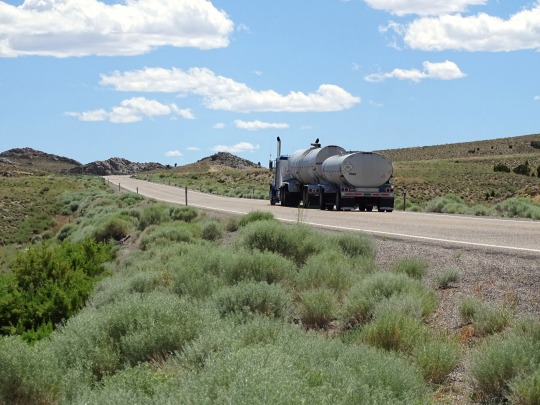



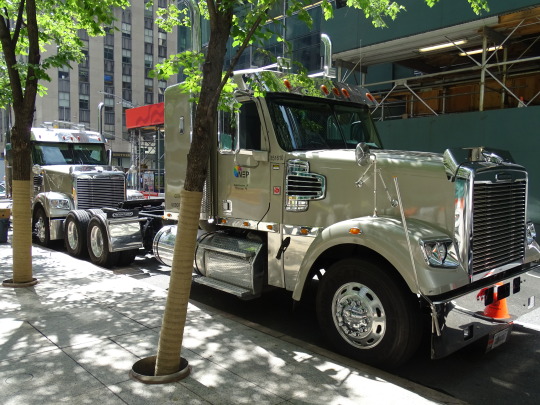
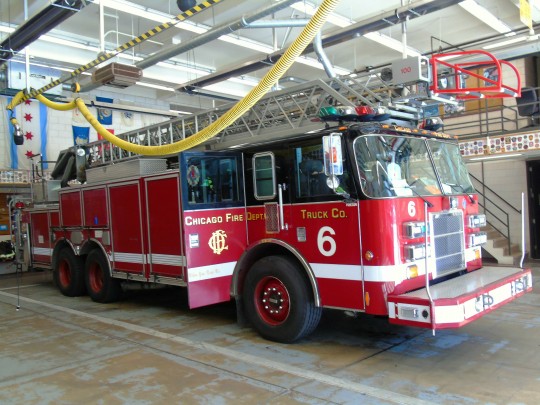
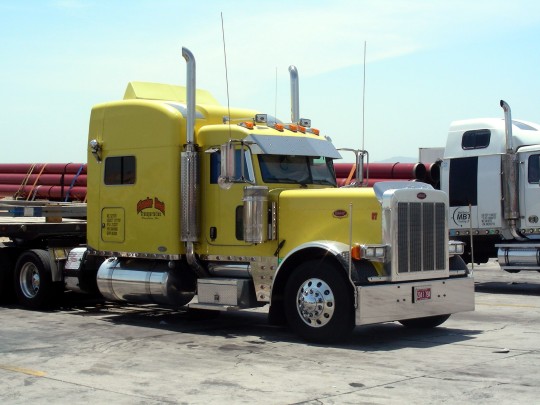


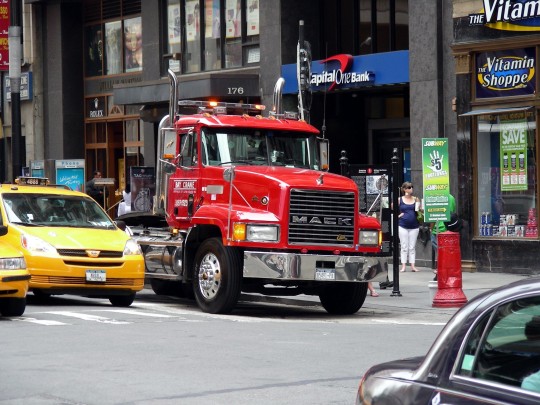
Truck Driver Day
Professional truck drivers are honored and celebrated today with Truck Driver Day. In the United States, a driver is considered to be a truck driver when their vehicle has a gross vehicle weight—the weight of the vehicle loaded—of at least 26,000 pounds. They must obtain a commercial driver's license (CDL) to drive a vehicle of this weight. Employers often require their drivers to take a safety training program, and some also require a high school degree or GED.
Truck drivers carry all kinds of freight—livestock, food, canned goods, liquids, packages, and vehicles—all across the United States and the world. They often have to load and unload their freight and must inspect their trucks before taking to the road. Truck drivers often ship products to stores, and some may have to undertake sales duties. Many truck drivers work long hours. Some may have daily local routes that keep them close to home, while others may have routes and schedules that often change, and many have to be away from home for an extended amount of time.
Some trucks were on the road in the United States prior to World War I. Trucks continued to be used and developed during the war, and by 1920 there were more than a million trucks on the roads of America. Trucking continued to expand over the following decade, on account of advancements such as the introduction of the diesel engine, improved rural roads, the introduction of power brakes and steering, and the standardization of truck and trailer sizes. In the 1930s, a number of trucking regulations were implemented, and the American Trucking Association was created. Trucking activity increased in the 1950s and '60s, in large part because of the creation of the Interstate Highway System. Regulations on the weight of trucks continued to be updated.
The heyday of the truck driver came in the 1960s and '70s. At the time, a wide swath of the public viewed truck drivers as modern-day cowboys or outlaws. The rise of "trucker culture" was signaled with the proliferation of trucker songs and films, the wearing of plaid shirts and trucker hats by the public, and the wide use of CB radios and CB slang. The romanticization of trucker culture subsided by the dawn of the 1980s.
Many truckers went on strike during the energy crises of 1973 and 1979, after the cost of fuel rose. The Motor Carrier Act of 1980 partially deregulated the industry. As a result, many new trucking companies were started. Trucker union membership also drastically declined, leading to lower pay. But the deregulation did reduce consumer costs, and it increased production and competition in the trucking industry. By the twenty-first century, trucking dominated the freight industry. In 2006, there were 26 million trucks on America's roads, which hauled about 70 percent of the country's freight. Truckers continue to play a prominent role in keeping the wheels of the economy turning, and for the hard work they put in to make this happen, they are honored and celebrated today!
How to Observe Truck Driver Day
Some ideas of ways the day could be spent include:
If you are a truck driver, get out there and drive! Or, take the day off. It should be up to you!
Wave to truckers or make a gesture like you are pulling a truck horn in an attempt to get them to honk their horns.
Thank a truck driver. Tell them thanks in person or make a social media post of thanks. Include the hashtag #TruckDriverDay.
Become a truck driver.
Listen to some truck driving songs such as "Convoy" and "Truck Drivin' Man."
Watch some truck driving films such as Smokey and the Bandit, Convoy, and Big Rig.
Talk on a CB radio.
Eat at a truck stop.
Attend or take part in the National Truck Driving Championships, which are held around the time as Truck Driver Day.
Read a book about trucking or truckers such as Trucking Country: The road to America's Wal-Mart Economy or The Long Haul: A Trucker's Tales of Life on the Road.
Explore the websites of organizations and companies related to the industry such as American Trucker, Truckers News, the Federal Motor Carrier Safety Administration, the American Trucking Associations, and the Women in Trucking Association.
Source
#Echo Canyon#Sherman Summit#Nevada#Utah#Wyoming#New York City#Hook & Ladder Company 8#fire truck#New York City Fire Department#USA#Chicago Fire Department#San Francisco Fire Department#street scene#cityscape#rest area#landscape#countryside#highway#original photography#car#engineering#tourist#Mack#Peterbilt#Truck Driver Day#Engine 13#12 August#TruckDriverDay
4 notes
·
View notes
Text
Generator In Healthcare Market Research Business, Technological Developments by 2033
The Generator in the Healthcare Industry Market size is estimated to grow by at a CAGR of 2.99% during 2024-2033
Generator in Healthcare Market Overview
Introduction: Generators are critical components of healthcare facilities, providing backup power to ensure uninterrupted operation of medical equipment, life support systems, and essential services during power outages or emergencies. Reliable power supply is essential for patient care, diagnosis, treatment, and the overall functioning of healthcare facilities.
Objective: This market overview aims to analyze the global generator market in the context of healthcare, including market size, trends, drivers, challenges, and regional dynamics.
Market Overview: The generator market in healthcare is driven by factors such as patient safety, regulatory compliance, and the need for uninterrupted healthcare services. Hospitals, clinics, and medical centers invest in generators as part of their disaster preparedness and business continuity planning to safeguard patient care and ensure healthcare delivery during power disruptions.
Market Drivers:
Patient Safety: Patient safety is a top priority for healthcare providers, driving investments in backup power solutions like generators to ensure continuous operation of life support systems, critical care equipment, and medical devices.
Regulatory Compliance: Regulatory authorities mandate healthcare facilities to implement backup power systems and emergency preparedness plans to protect patient health and safety, driving demand for generators in the healthcare sector.
Emergency Preparedness: Hospitals and medical centers must be prepared to respond to emergencies, natural disasters, and public health crises by maintaining reliable backup power systems to support essential services and medical interventions.
Medical Equipment Reliability: Medical equipment and devices, including imaging systems, ventilators, and monitoring devices, require uninterrupted power supply to function effectively and accurately, necessitating backup power solutions like generators.
Market Challenges:
Budget Constraints: Healthcare facilities face budgetary constraints and competing priorities when investing in backup power infrastructure, requiring cost-effective solutions that balance reliability, performance, and affordability.
Maintenance Requirements: Generators require regular maintenance, testing, and inspection to ensure operational readiness and reliability, posing challenges for healthcare providers in terms of resource allocation and staffing.
Space Limitations: Healthcare facilities may have limited space for generator installation, necessitating compact, space-saving designs that meet power capacity requirements while minimizing footprint and logistical challenges.
Environmental Impact: Traditional diesel generators used in healthcare facilities emit pollutants and greenhouse gases, raising environmental concerns and regulatory scrutiny, prompting operators to explore cleaner and more sustainable power alternatives.
𝐑𝐞𝐜𝐞𝐢𝐯𝐞 𝐭𝐡𝐞 𝐅𝐑𝐄𝐄 𝐒𝐚𝐦𝐩𝐥𝐞 𝐑𝐞𝐩𝐨𝐫𝐭 @ https://stringentdatalytics.com/sample-request/generator-in-healthcare-market/14114/
Global Generator in Healthcare Market: By Company
Caterpillar Inc.
Cummins Inc.
Generac
Kohler Co.
Global Generator in Healthcare Market: By Type
Stationary
Portable
Global Generator in Healthcare Market: By Application
Hospitals
Clinics
Others
𝐂𝐥𝐢𝐜𝐤 𝐭𝐨 𝐏𝐮𝐫𝐜𝐡𝐚𝐬𝐞 𝐌𝐚𝐫𝐤𝐞𝐭 𝐑𝐞𝐬𝐞𝐚𝐫𝐜𝐡 𝐑𝐞𝐩𝐨𝐫𝐭 @ https://stringentdatalytics.com/purchase/generator-in-healthcare-market/14114/?license=single
Regional Analysis:
North America: The healthcare generator market in North America is driven by the presence of advanced healthcare infrastructure, stringent regulatory requirements, and the need for disaster preparedness and emergency response capabilities. Hospitals and medical centers invest in backup power solutions, including generators, to ensure patient safety and continuity of care.
Europe: European healthcare facilities prioritize energy efficiency, sustainability, and carbon reduction, driving investments in generator technologies that minimize environmental impact and align with regulatory mandates for clean energy and emissions reduction. Renewable energy integration and energy storage solutions complement generator infrastructure in the region.
Asia-Pacific: The Asia-Pacific region sees rapid growth in healthcare infrastructure development, driven by population growth, urbanization, and increasing healthcare spending. Hospitals and medical centers invest in backup power solutions, including generators, to address power reliability challenges and ensure healthcare delivery in remote or underserved areas.
Middle East and Africa: The Middle East and Africa region experience investments in healthcare infrastructure to support population health, medical tourism, and economic development. Healthcare facilities prioritize resilience and continuity of care, driving demand for backup power solutions like generators to mitigate power outages and ensure patient safety.
Conclusion: The generator market in healthcare plays a critical role in safeguarding patient care, ensuring continuity of healthcare services, and supporting emergency response and disaster preparedness efforts. Despite challenges related to budget constraints, maintenance requirements, and environmental impact, the market continues to grow driven by increasing healthcare demand, regulatory compliance requirements, and the need for reliable backup power solutions. Continued investments in technology innovation, renewable energy integration, and regulatory compliance will be key to unlocking the full potential of the healthcare generator market and meeting the evolving needs of healthcare delivery in the 21st century.
About Stringent Datalytics
Stringent Datalytics offers both custom and syndicated market research reports. Custom market research reports are tailored to a specific client's needs and requirements. These reports provide unique insights into a particular industry or market segment and can help businesses make informed decisions about their strategies and operations.
Syndicated market research reports, on the other hand, are pre-existing reports that are available for purchase by multiple clients. These reports are often produced on a regular basis, such as annually or quarterly, and cover a broad range of industries and market segments. Syndicated reports provide clients with insights into industry trends, market sizes, and competitive landscapes. By offering both custom and syndicated reports, Stringent Datalytics can provide clients with a range of market research solutions that can be customized to their specific needs.
Reach US
Stringent Datalytics
+1 346 666 6655
Social Channels:
Linkedin | Facebook | Twitter | YouTube
0 notes
Text
Telemedicina apresenta benefícios para pessoas diagnosticadas com o Transtorno do Espectro Autista

Os benefícios das plataformas on-line em que o paciente com TEA não precisa se deslocar para o atendimento, sair de suas residências ou lugares em que se sentem seguros e ter contato físico com o profissional da saúde são os principais fatores para optarem pela telemedicina A telemedicina, ao integrar a tecnologia à prática médica, apresenta benefícios significativos para pessoas diagnosticadas com o Transtorno do Espectro Autista (TEA). As consultas on-line representam uma mudança paradigmática no tratamento, amenizando desafios frequentes enfrentados por pacientes e seus cuidadores. A exposição aos gatilhos que podem desencadear reações adversas nos pacientes é minimizada por meio da telemedicina. Um dos principais benefícios é a eliminação da necessidade de deslocamento físico, permitindo que os pacientes recebam cuidados especializados no conforto de seus lares. “Esse aspecto é particularmente relevante para pessoas com TEA, que muitas vezes enfrentam desafios relacionados a mudanças de ambiente, novos estímulos e sensibilidades sensoriais”, explicou o médico-gestor do aplicativo de telemedicina assíncrona Olá Doutor, Rafael Machado. Rodrigo Diesel, 32 anos, professor e influencer digital, confirma o que o médico abordou. “A telemedicina é um recurso que está me ajudando bastante. Por conta de questões sensoriais típicas do autismo e da rigidez cognitiva, muitas vezes lidar com a espera em consultórios, atrasos no atendimento, ou remarcação e cancelamento de consultas, podem ocasionar crises de meltdown (explosivas) ou shutdown (desligamento)”, contou Rodrigo. As consultas online oferecem um ambiente controlado, no qual os profissionais de saúde podem adaptar a comunicação de acordo com as necessidades individuais de cada paciente com TEA. A possibilidade de interação virtual reduz estímulos sensoriais indesejáveis, contribuindo para uma experiência mais positiva durante as consultas. “Principalmente na nossa plataforma, onde a consulta é assíncrona, via chat. O paciente pode responder por mensagens ao médico, do lugar que ele se sentir mais confortável e sem sequer precisar falar por vídeo, outra dificuldade nestes casos”, afirmou Machado. Outro fato importante para Rodrigo, que consulta através do aplicativo assíncrono Olá Doutor, é que não há a necessidade de falar, ligar a câmera ou o microfone. “Eu consigo me expressar melhor, principalmente em um momento em que eu já estou mais sensível por causa de uma questão da minha saúde. Consigo, dessa forma, ser mais claro em minhas demandas e explicar melhor o que estou sentindo e precisando”, finalizou. SOBRE O OLÁ DOUTOR Diferente de outras soluções baseadas em Inteligência Artificial, o Olá Doutor é um aplicativo que garante que todos os atendimentos sejam realizados por médicos, desde o primeiro contato de acesso. O aplicativo de telemedicina assíncrona - com atendimentos por chat, garante a privacidade do paciente e a sua disponibilidade de tempo e já conta com mais de 175.000 mil downloads, mais de 40 mil pacientes cadastrados e a realização de mais de 1.200 consultas ao mês. Seguindo um crescimento de 20% ao mês. O Olá Doutor permite às pessoas acessarem um médico em minutos, de qualquer lugar, sem precisar ligar a câmera, agendar consulta e enfrentar filas. O atendimento é realizado por médicos cadastrados no Conselho Federal de Medicina e é possível obter orientações, solicitações de exames, prescrição de medicamentos, receitas de remédios e atestados, quando o profissional da saúde achar necessário, 24 horas por dia e 7 dias por semana. Camejo Estratégias em Comunicação Read the full article
0 notes
Text
Leading Jerry Can manufacturers in Mumbai. Experts in plastic container production
In today's fast-paced world, the need for reliable and durable storage and transportation solutions has become increasingly important. Whether it's for storing liquids, preparing for emergencies, or transporting essential supplies, jerry cans have proven to be indispensable. As a leading hub for manufacturing excellence, Mumbai is home to some of the top jerry can manufacturers in the industry, excelling in plastic container production.
In this comprehensive article, we will delve into the diverse uses of jerry cans, explore the different types available in the market, and discuss the numerous advantages they offer. We will provide valuable insights on what to look for in a reputable jerry can manufacturer, including key factors such as material quality, production capacity, customization options, and adherence to certifications and standards.

We will highlight the top jerry can manufacturers in Mumbai, showcasing their expertise and commitment to delivering high-quality products. Whether you are a business seeking reliable suppliers or an individual in need of dependable jerry cans, this article will serve as your definitive guide to navigating the world of jerry can manufacturing in Mumbai. So, let's dive in and explore the fascinating world of jerry cans and the manufacturers who excel in producing these essential containers.
What are the Uses of Jerry Cans?
Jerry Can Manufacturers in Mumbai serve various essential purposes, including the storage of liquids, transportation of fluids, and as a crucial component of emergency preparedness kits.
These versatile containers are commonly used to store and transport water, fuel, and other essential liquids during outdoor activities such as camping, hiking, and boating. In emergency situations, jerry cans play a vital role in ensuring access to clean drinking water and fuel for generators or vehicles. Their durable construction and leak-resistant design make them reliable tools for safeguarding supplies during natural disasters or other crises.
The compact size and stackable nature of jerry cans make them convenient for storage, allowing households to be well-prepared for unexpected events.
Storage of Liquids
The storage of liquids in jerry cans is a common practice due to their durability and secure sealing, making them ideal for preserving various fluids such as water, fuels, and chemicals.
These robust containers are designed to resist impact and withstand harsh environmental conditions, ensuring the integrity of the stored liquids. Their sealing mechanisms, often featuring airtight caps or threaded closures, prevent leakage and evaporation, safeguarding the contents.
Different types of jerry cans are tailored to specific fluids; for instance, those used for fuel storage are equipped with features to minimize vapors and spills, while jerry cans for water are often designed with ergonomic handles and spouts for easy dispensing.
Transportation of Liquids
Jerry cans are widely utilized for the transportation of liquids, providing a secure and portable solution for carrying water, fuels, and other fluids during travel or emergency situations.
Their robust construction and spill-proof design make them ideal for safely transporting liquids across different terrains, whether it's for camping trips, off-road adventures, or disaster relief efforts. Their versatility allows for the safe storage and transport of various types of liquids, including gasoline, diesel, kerosene, and water, making them an indispensable tool for both personal and industrial use.
Emergency Preparedness
In emergency preparedness kits, jerry cans play a vital role in ensuring access to essential liquids such as water and fuel, providing a reliable storage and transport solution during crises and natural disasters.
Their durability and rugged construction make them essential for securing crucial supplies in unpredictable situations. Whether evacuating or sheltering in place, having a sturdy container for water and fuel is crucial. Jerry cans are designed to withstand harsh conditions, preventing leaks and ensuring the safe storage of vital fluids. Their practicality, portability, and resilience contribute significantly to disaster readiness, making them an indispensable staple in emergency preparation kits.
What are the Different Types of Jerry Cans?
Jerry cans are available in various types, including:
Metal jerry cans, known for their durability and resistance to harsh conditions, making them ideal for transporting fuel and other liquids in rugged environments.
Plastic jerry cans, lightweight and often preferred for storing water or chemicals due to their corrosion resistance.
Collapsible jerry cans, with their space-saving design, are excellent for camping trips and emergency preparedness, as they can be easily stored when not in use.
Each type caters to specific needs, providing users with options tailored to their requirements.
Metal Jerry Cans
Metal jerry cans are known for their robust construction and durability, making them suitable for rugged environments and long-term storage of flammable or corrosive liquids.
They are designed to withstand rough handling and harsh conditions, offering exceptional strength and impact resistance. Their corrosion-resistant properties make them ideal for storing various types of liquids, including fuel, oil, and chemicals.
Their versatility and reliability make metal jerry cans essential for military, industrial, and outdoor applications where safety and durability are paramount.
Plastic Jar
Plastic Jar Manufacturers in Mumbai cans are lightweight and versatile, offering a cost-effective solution for storing and transporting various liquids, including water, detergents, and edible oils.
They are known for their durability and ability to withstand a range of temperatures, making them suitable for both indoor and outdoor use. Their secure lid design ensures leak-proof transportation, and the sturdy handle facilitates easy carrying. These jerry cans are also compatible with a variety of liquid products, from industrial chemicals to food-grade substances, making them a practical choice for both household and commercial purposes. Their affordability makes them a popular option for budget-conscious consumers and businesses alike.
Collapsible Jerry Cans
Collapsible jerry cans provide a unique advantage of space-saving storage when empty, making them ideal for outdoor activities, camping, and emergency kits where compactness is essential.
Their foldable design allows them to be easily packed away when not in use, freeing up valuable space during travel or storage. This makes them highly convenient for transporting water, fuel, or other liquids on the go, without the need for bulky containers.
The durable construction of collapsible jerry cans ensures that they can withstand rugged outdoor conditions, offering a reliable solution for portable liquid storage. Their versatility and suitability for various types of liquids make them a practical choice for a wide range of applications.
What are the Advantages of Using Jerry Cans?
The use of jerry cans offers multiple advantages, including durability, ease of transport, versatility in use, and cost-effectiveness, making them indispensable for various liquid storage and transport needs.
Their durable construction allows them to withstand rough handling and extreme weather conditions, making them reliable for outdoor activities, camping, and emergency preparedness. The portability of jerry cans enables convenient transportation of liquids, such as fuel, water, or chemicals, in diverse settings.
Their versatility makes them suitable for storing and carrying various types of liquids, from household items to industrial substances, while their cost-effectiveness helps users save money on packaging and transportation expenses.
Durable and Long-lasting
Jerry cans are renowned for their durability and long-lasting performance, ensuring the safe storage and transport of liquids in diverse environments and conditions.
Constructed from hard-wearing materials such as high-density polyethylene, metal, or even stainless steel, jerry cans are designed to withstand the toughest conditions. Their robust construction makes them resistant to impact and corrosion, ensuring prolonged usability even in harsh outdoor settings. Whether it's for storing fuel, water, or other liquids, these reliable containers are built to last, providing peace of mind for users across various industries and activities.
Easy to Transport
The design of jerry cans facilitates easy and convenient transport of liquids, featuring handles and ergonomic features for comfortable carrying and pouring.
The handles of jerry cans are strategically placed for a balanced grip, allowing for effortless lifting and maneuvering. Their compact and stackable structure makes them ideal for transportation in various vehicles or by hand. The ergonomic design minimizes strain on the body, enabling users to pour liquids with stability and control. These attributes contribute to the practicality and user-friendliness of jerry cans, making them a popular choice for transporting fluids in a range of settings.
Versatile in Use
Jerry cans offer versatility in their applications, catering to a wide range of liquid storage and transport needs, from household use to industrial and outdoor activities.
Their durable construction makes them suitable for storing and transporting fuels, oils, water, and other liquids with ease. Whether it's for camping trips, emergency preparedness, or agricultural use, jerry cans are designed to withstand rough handling and varying environmental conditions. Their secure sealing also prevents leakage, ensuring safe and reliable containment of liquids during storage and transportation.
With their ergonomic design and easy handling, jerry cans have become indispensable for a multitude of liquid-related purposes.
Cost-effective
The cost-effectiveness of jerry cans makes them a practical solution for liquid storage and transport, offering an economical choice without compromising on quality and reliability.
Their affordability ensures that individuals or businesses can meet their storage and transportation needs without breaking the bank. The value proposition lies in their durability, providing a long-lasting solution that doesn't require frequent replacements.
Regardless of budget considerations, jerry cans offer a versatile and cost-effective option, catering to a wide range of consumer needs. This cost-effective nature extends beyond the initial purchase, as their durability and reusability add to their overall value for money.
What to Look for in a Jerry Can Manufacturer?
Selecting a jerry can manufacturer requires consideration of factors such as the quality of materials used, production capacity, customization options, and adherence to certifications and standards.
Quality of materials is crucial, with a focus on durable and corrosion-resistant materials like high-density polyethylene. Production capacity must align with your needs to ensure timely delivery. Flexibility in customization allows for tailored solutions.
Seeking manufacturers with recognized industry certifications such as ISO 9001 and UN certifications ensures compliance with standards. Evaluating all these factors will help you choose a manufacturer aligned with your specific requirements.
Quality of Materials Used
The quality of materials used by a jerry can manufacturer directly influences the durability, safety, and reliability of the produced containers, making it a crucial factor for consideration.
It is imperative for manufacturers to prioritize the selection of high-grade materials as it impacts various aspects of the jerry can's performance. The strength and resistance to corrosion, as influenced by the material quality, directly determine the longevity of the jerry can, ensuring it can withstand harsh conditions.
The choice of materials significantly affects safety standards, as durable materials reduce the risk of leakage and contamination. Material quality is pivotal in ensuring that the jerry cans meet rigorous industry standards and deliver optimal performance.
Production Capacity
The production capacity of a jerry can manufacturer determines their ability to meet demand and deliver consistent supply, making it a vital consideration for procurement needs.
Understanding the production capacity of a manufacturer is crucial for ensuring smooth supply chain management. It directly impacts the company's ability to scale operations, handle unforeseen demand surges, and diversify the product range to meet varying customer requirements. A manufacturer's production capacity can also signal their reliability and commitment to fulfilling orders on time, which is essential for maintaining customer satisfaction and loyalty in a competitive market.
Thus, evaluating production capacity is a strategic decision that significantly influences a company's procurement strategy and overall business performance.
Customization Options
Customization options offered by jerry can manufacturers enable tailored solutions to specific requirements, allowing for branding, special features, and product adaptations as per client needs.
These customized solutions play a pivotal role in meeting unique specifications for a diverse range of industries. Through personalized branding considerations, companies can reinforce their identity and distinguish their products within the market. The flexibility to incorporate special features and product enhancements ensures that the jerry cans align perfectly with the intended functions, whether it's for industrial use, transportation, or storage.
This level of customization empowers businesses to cater to the distinct demands of their customers, driving innovation and competitiveness in the industry.
Certifications and Standards
Adherence to industry certifications and standards is essential for jerry can manufacturers, ensuring product quality, safety compliance, and regulatory alignment for customer trust and confidence.
These certifications and standards play a pivotal role in upholding the integrity of jerry can manufacturing, providing a framework that governs production processes, material selection, and testing procedures. By following established guidelines, manufacturers can instill confidence in their products, assuring customers that the jerry cans meet stringent quality benchmarks. Adherence to these standards demonstrates a commitment to safety protocols and regulatory requirements, contributing to the overall reliability and performance of the manufactured jerry cans.
Top Jerry Can Manufacturers in Mumbai
Mumbai is home to several leading jerry can manufacturers known for their expertise in plastic container production, offering a diverse range of high-quality solutions for liquid storage and transport.
They have honed their skills in creating jerry cans that meet stringent quality standards and compliance regulations. With state-of-the-art facilities and advanced manufacturing processes, these manufacturers have established themselves as pioneers in the industry. Their production capabilities allow them to efficiently cater to varying customer demands, including custom designs and large-scale orders.
Their commitment to innovation and sustainable practices has further solidified their position as trusted leaders in the jerry can manufacturing sector in Mumbai.
Plast World
Plast World stands as a leading jerry can manufacturer in Mumbai, renowned for its expertise in plastic container production and a diverse product range catering to various liquid storage needs.
The company's production capabilities include state-of-the-art injection molding technology, ensuring high-quality and durable jerry cans. Plast World offers a vast portfolio of jerry cans designed for transporting and storing water, chemicals, oils, and other fluids, meeting the stringent industry standards.
With its industry leadership, the company constantly innovates and introduces new designs and features, maintaining its position as a trusted and reliable supplier for businesses and consumers alike.
Raj Plastics
Raj Plastics is a distinguished name among jerry can manufacturers in Mumbai, leveraging its expertise and advanced production facilities to deliver top-quality solutions for liquid storage and transport.
Their extensive industry knowledge and state-of-the-art production capabilities enable them to cater to diverse client requirements. The company's commitment to quality is evident in their stringent quality control measures and adherence to industry standards.
With continuous technological advancements, Raj Plastics stays at the forefront of innovation, consistently offering efficient and reliable jerry cans for various applications. This has established them as a trusted and reputable player in the industry, known for their consistent product excellence and customer satisfaction.
Shree Plast Industries
Shree Plast Industries is recognized as a leading jerry can manufacturer in Mumbai, offering a comprehensive range of high-quality solutions for liquid storage, backed by advanced production facilities and industry expertise.
With its state-of-the-art manufacturing capabilities, the company produces a diverse portfolio of jerry cans that cater to various industries, including pharmaceuticals, chemicals, and food processing. Shree Plast Industries' commitment to innovation and quality is evident in its use of advanced technologies to ensure the strength, durability, and leakage protection of its jerry cans, meeting the stringent standards of the industry. This dedication to excellence has established the company as a trusted partner for safe and reliable liquid storage solutions.
Star Plastics
Star Plastics stands as an expert HDPE Floor Cleaner Bottle Manufacturer in Mumbai, known for its specialized production capabilities and a comprehensive range of reliable solutions for liquid storage and transport.
The company's industry leadership is reflected in its ability to offer a diverse range of jerry cans, catering to various industries and their specific requirements. Star Plastics' commitment to excellence is evident in its state-of-the-art production facilities and stringent quality control processes, ensuring that its products meet the highest standards of durability and performance. Whether it's for chemicals, oils, or other liquids, Star Plastics has established itself as a trusted provider of jerry cans that customers can rely on for safe and efficient storage and transportation.
S.K. Industries
S.K. Industries is a leading name in the jerry can manufacturing sector in Mumbai, renowned for its advanced production infrastructure and a wide spectrum of high-quality liquid storage solutions.
The company's state-of-the-art manufacturing facilities are equipped with cutting-edge technologies that enable the production of an extensive range of jerry cans in different sizes, materials, and specifications. S.K. Industries maintains its market leadership by consistently introducing innovative designs and materials to meet the evolving demands of the industry, showcasing their commitment to product excellence and customer satisfaction.
The company's dedication to technological advancements and product quality has positioned them as a trusted and reliable partner in the liquid storage solutions market.
0 notes